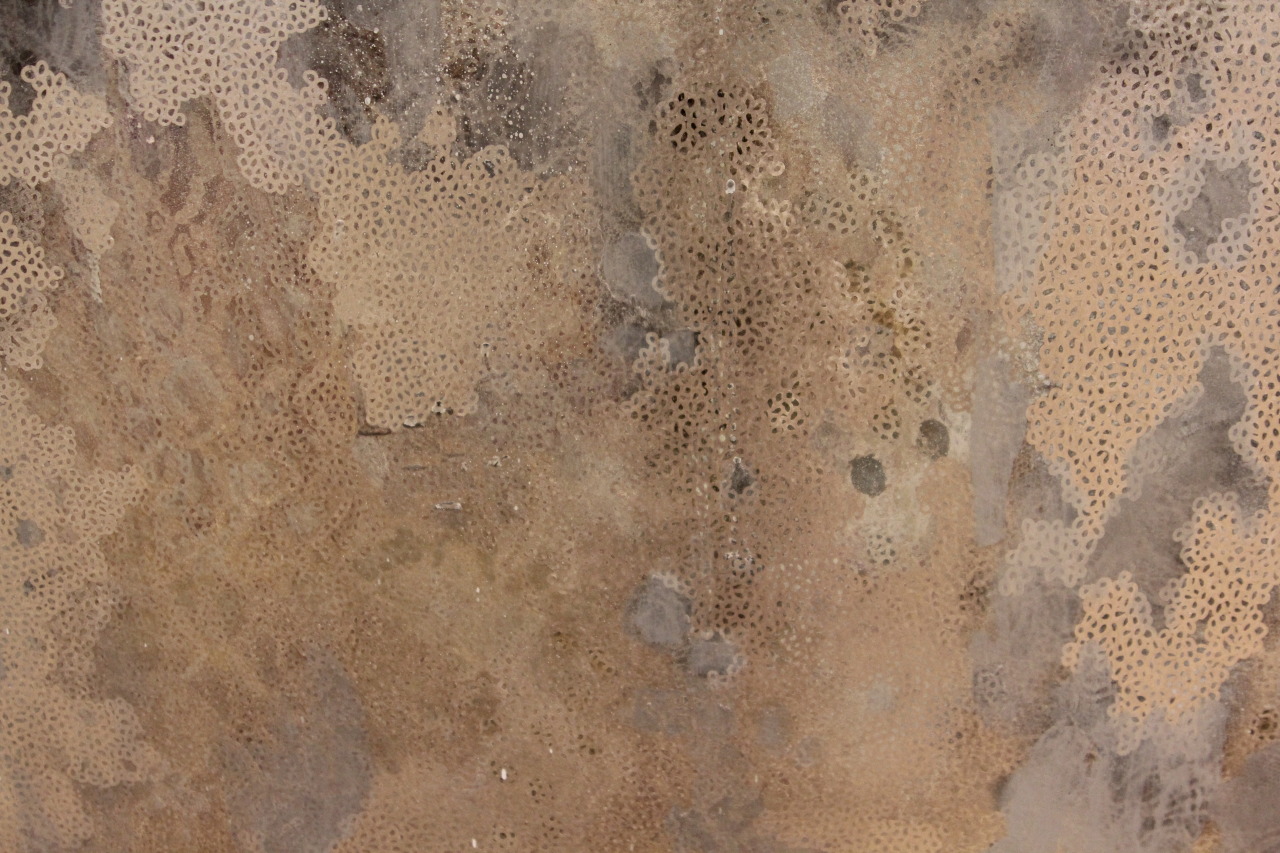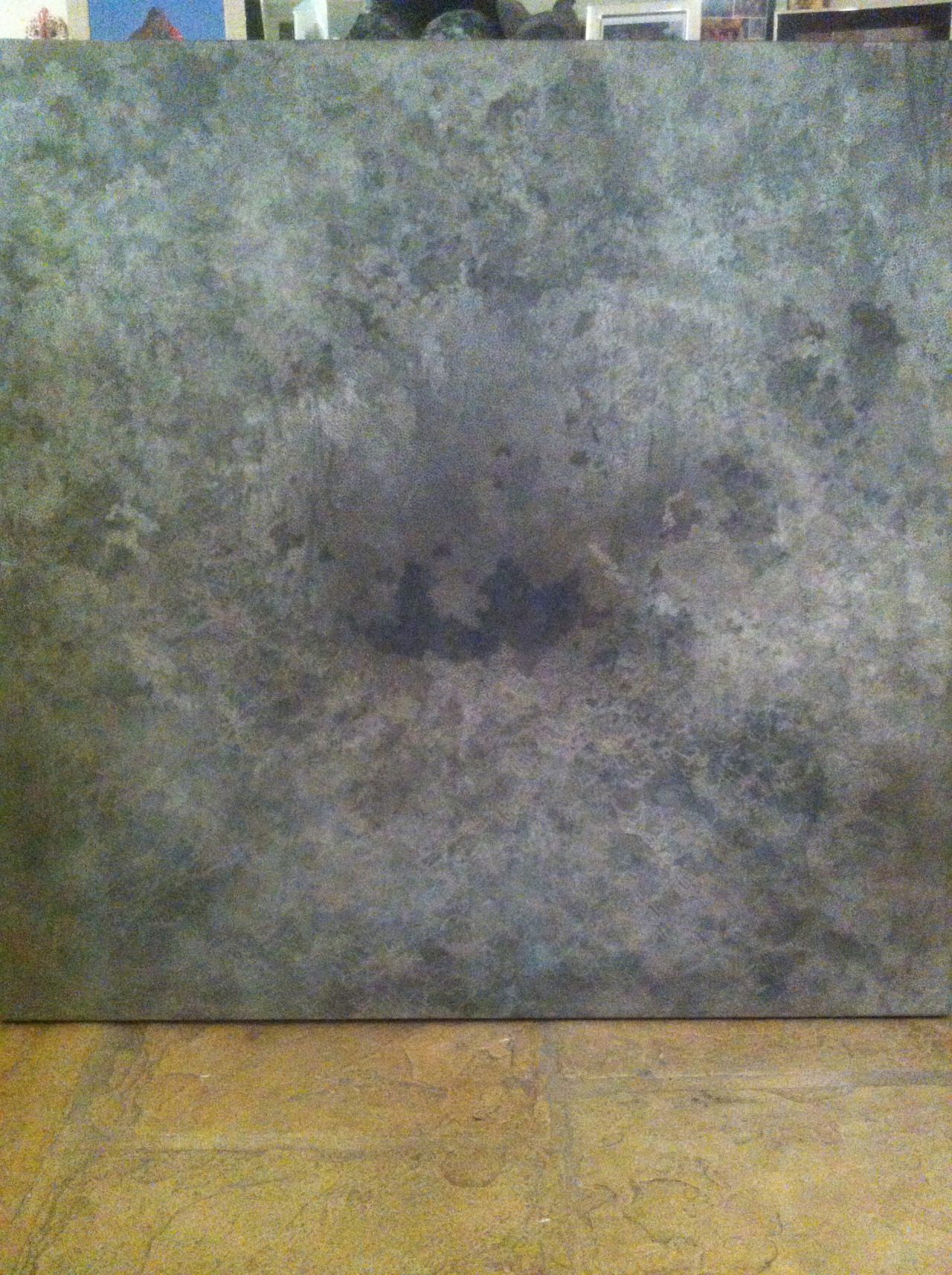Source: Google.com.pk
Purdey Fitzherbert is an emerging contemporary artist who is concerned with recording the transient interactions of light, colour, and form when confronted with the subjectivity of vision. In her latest series, Afterimage, Fitzherbert presents us with a group of paintings that foreground the very limits of visual representation. Her abstract mixed-media canvases are highly detailed, multi-layered compositions that interact with each other, as well as with the light, presence and position of the viewer. Although formally quite subtle and calm, the noticeable changes in colour and form that occur with an amendment of lighting or position, activates a certain internal volatility that spills out into the space where they are hung. The multitude of cells that proliferate Fitzherbert’s paintings heighten this feeling, as their intricate patterns take on an element of the self-generative, expanding both in depth and area in the manner of infinite transformation. Fitzherbert takes her inspiration for this series from afterimages, the optical illusion whereby an image continues to appear in one’s vision after the exposure to the original has ceased. Just as one experiences this illusion after looking into a light source for a few seconds, the same effect occurs when presented with the works on view, as Fitzherbert’s paintings trigger these impressions that last long after having left the room. Fitzherbert’s focus on light’s power to reveal, conceal and manipulate what we see is fundamental to these works both thematically and stylistically. The detailed patterns of cells that appear on the surface of her works are the artist’s depiction of the tiny pixels of coloured light that make up everything that we see. Beneath these cells are layers of oil paint, metallic pigment, and spray paint that interact with one another in such a way that the work seems to be permanently shifting. As a result, engaging with Fitzherbert’s paintings requires a certain movement of the body, a stretching up and stepping back that assigns to the viewer the responsibility to perform part of the work; it is this requirement of movement that allows Fitzhebert’s paintings to approach the three-dimensionality of sculpture. The study of afterimages comes back to Fitzherbert’s desire to strip back vision and sight to its purest form, “my work has taught me to….register what my eyes are actually seeing without any preconceptions…to the point of being able to see a complex, pixilated, vibrating, pulsating image in front of me.” This is what Fitzherbert is attempting to record, to work with the invisible so that it may become visible. Complimented by her affinity with the values of the Japanese aesthetic of Wabi-sabi, which embraces simplicity and imperfection in nature, Fitzherbert’s artistic practice begins with the documentation of the natural cycles of growth, decay, and death in nature. Her close examination of the individual mannerisms of these naturally occurring patterns as they give in to their inevitable change are then repeated and often exaggerated on the canvas through the artist’s eyes. This almost scientific study of light is complicated by the subjectivity of vision and also of memory, and as a result Fitzherbert’s work oscillates between the documentary and the abstract.Her paintings hover intangibly out of reach, endlessly trying to capture the fleeting moment where light momentarily transforms the everyday, yet simultaneously illustrating the inherent impossibility to stabilize subjective experience; the play of light across the canvas is neither defined nor permanent, and the enigmas of vision in nature are re-performed in each instance of beholding. Ultimately, what Fitzherbert is attempting to depict here is an experience, to recreate a vision or a memory rather than a recognizable object, “My work has become a recording of the almost transient, playful nature of light…the way light can make objects illuminate and fade.”Purdey Fitzherbert completed her foundation studies at Wimbledon College of Art before completing a BA Degree with Honours in Fine Arts at Newcastle University. While at Newcastle, Fitzherbert complimented her Fine Art studies with private tutorials with senior Psychology lecturer, Dr. Gabriele Jordan, in order to learn the science behind the theory of how humans see and experience colour. Afterimage is her inaugural solo exhibition with Hus Gallery in London. Fitzherbert has exhibited in group shows in Monaco, Gstaad, Switzerland, and London. She will also be exhibiting with Hus Gallery at SP-Arte, São Paulo International Art Fair and at the Dallas Art Fair in Spring 2014. Fitzherbert categorizes herself mainly as an abstract painter, but also claims influences from Op art, Minimalism, Impressionism, and Light art.










No comments:
Post a Comment